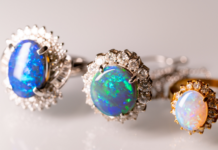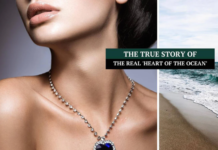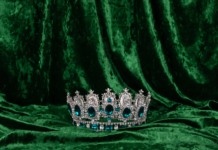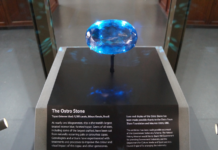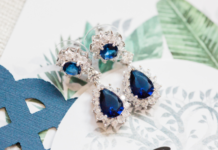Ruby are among the most highly desired gems in the world. Known for their vibrant red color and stunning beauty, rubies have been prized for centuries for their rarity, durability, and spiritual significance.
In this comprehensive guide, we will explore everything you need to know about ruby gemstones, from their history and healing properties to how to care for them and incorporate them into your jewelry collection.
What is a Ruby?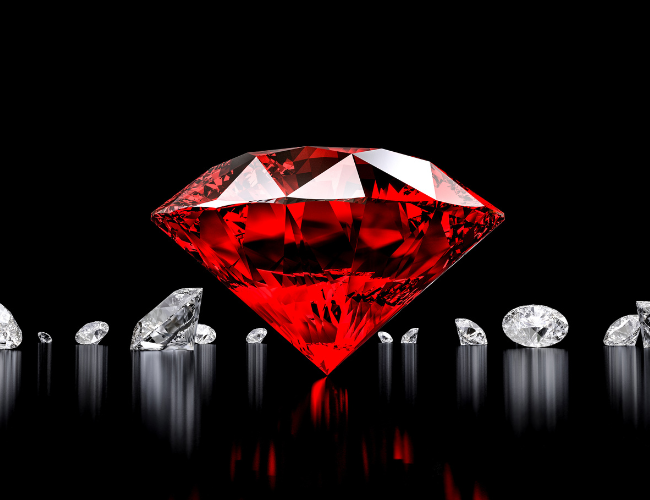
A ruby gemstone is a variety of corundum, a mineral species that also includes sapphires. Rubies are distinguished by their bright red color, which is caused by trace amounts of chromium in the crystal structure. The intensity of the color can vary from a deep, rich red to a more pinkish hue, with the most valuable stones having a vivid, pure red color.
Ruby is one of the most durable gemstones, with a hardness of 9 on the Mohs scale (second only to diamonds). This makes it an excellent choice for jewelry that can be worn regularly without fear of scratching or damage.
The History of Ruby Gemstones
Rubies have been prized for thousands of years, with some of the oldest known ruby jewelry dating back to ancient civilizations in India, Persia, and China. In these cultures, rubies were revered as symbols of power, protection, and prosperity, and were often worn by royalty and high-ranking officials.
One of the most famous ruby artifacts in history is the Black Prince’s Ruby, which is not actually a ruby but a spinel. It was given to Edward, Prince of Wales, in 1367 and has since been set into the Imperial State Crown of England.
The Timur Ruby, a large, uncut weighing over 350 carats, is another notable example of a historical this gemstone.
How to Identify a Genuine Ruby?
As with any gemstone, there are imitation and synthetic rubies on the market that can be difficult to distinguish from genuine stones. When shopping for a ruby, it is important to know what to look for to ensure you are getting a high-quality, natural stone.
Here are some tips for identifying a genuine this gemstone:
- Look at the color: A true ruby should have a deep, rich red color. Stones that are too light or pinkish may be lower quality or even imitations.
- Consider the clarity: While some inclusions are normal in rubies, the stone should not be heavily included or opaque.
- Check the cut: A well-cut ruby will have excellent brilliance and sparkle. Poorly cut stones may appear dull or lifeless.
- Look for natural imperfections: Natural rubies will have small, natural imperfections such as tiny cracks or bubbles. If a stone appears too perfect, it may be synthetic or treated.
If you are unsure about the authenticity of a ruby, it is always best to have it examined by a reputable gemologist.
The Healing Properties of Ruby
In addition to their beauty and rarity, ruby gemstones are believed to have powerful healing properties. Throughout history, rubies have been associated with vitality, strength, passion, and courage, and have been used in many different spiritual practices.
Here are some of the most commonly attributed healing properties of this gemstones:
- Physical health: Rubies are thought to enhance circulation, boost the immune system, and support overall physical health and well-being.
- Emotional health: Rubies are believed to help promote self-confidence, motivation, and positive thinking, and can be useful for those struggling with depression or anxiety.
- Spiritual growth: Rubies are considered to be powerful stones for spiritual growth and transformation, helping to open the heart chakra and connect with higher states of consciousness.
While the healing properties of ruby gemstones are not scientifically proven, many people find them to be a helpful tool for personal growth and self-discovery.
Different Types of Ruby Gemstones
Ruby gemstones come in a variety of different types and colors, each with its own unique characteristics and qualities. Here are some of the most common types of this gemstones:
- Burmese rubies: Considered to be some of the most valuable and sought-after rubies in the world, Burmese rubies have a deep red color that is often described as “pigeon’s blood” red.
- African rubies: African rubies can range in color from pinkish-red to a deeper, more purple-red hue. They are typically less expensive than Burmese rubies but still highly valued.
- Star rubies: These rare rubies display asterism, or a six-ray star pattern, which is caused by tiny inclusions within the crystal structure. They are highly prized for their unique appearance.
- Synthetic rubies: Synthetic rubies are created in a laboratory using the same chemical composition as natural rubies. While they may look identicalto natural rubies, they are generally less valuable and sought-after by collectors.
How to Care?
To keep your ruby gemstone looking its best, it is important to take proper care of it. Here are some tips for caring for your ruby:
- Store separately from other jewelry to prevent scratches or damage.
- Clean regularly using a soft cloth and warm water with a mild soap. Avoid using harsh chemicals or ultrasonic cleaners.
- Remove jewelry before engaging in activities that could cause damage, such as sports or heavy lifting.
- Have professionally inspected and cleaned every year to ensure it is in good condition.
With proper care, gemstone can last for generations and continue to retain its stunning beauty.
Famous Ruby Gemstones in History
Throughout history, there have been many famous ruby gemstones that have captured the attention of people all over the world. Here are just a few examples:
The Black Prince’s Ruby
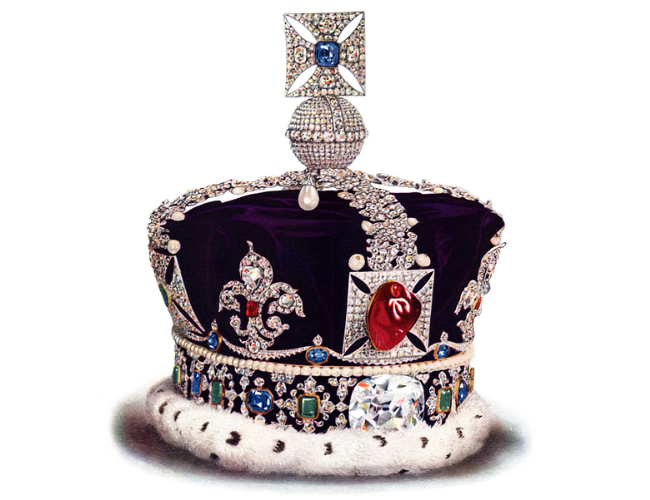
As mentioned earlier, the Black Prince’s Ruby is one of the most famous ruby artifacts in history. Despite its name, it is actually a spinel stone that weighs over 170 carats. It has been part of the British crown jewels since the 14th century and continues to be a symbol of power and prestige.
The Sunrise Ruby
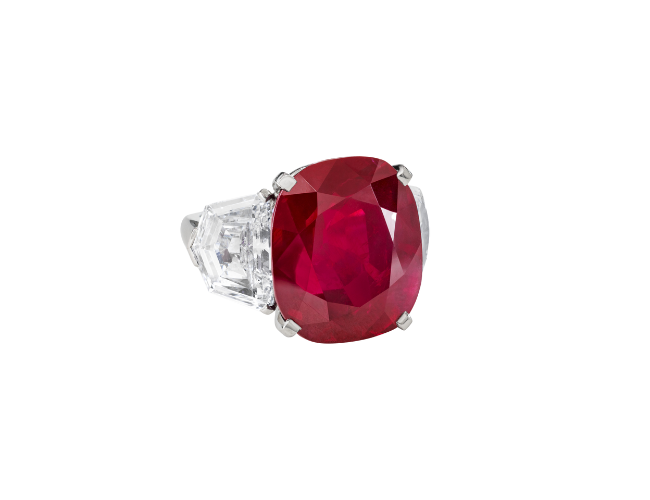
The Sunrise Ruby is a rare Burmese ruby that was sold at auction in 2015 for over $30 million, making it the most expensive ruby ever sold. Weighing in at 25.59 carats, this stunning gemstone has a deep red color and exceptional clarity that make it truly one-of-a-kind.
The Rosser Reeves Star Ruby

The Rosser Reeves Star Ruby is an impressive 138.7-carat star ruby that was discovered in Sri Lanka in the 1950s. It is named after its former owner, Rosser Reeves, who was a prominent advertising executive. The stone is famous for its six-rayed star pattern and deep red color.
The Process of Mining
Mining ruby gemstones is a complex process that requires specialized equipment and expertise. Rubies are typically found in mines in countries such as Myanmar (formerly known as Burma), Thailand, Sri Lanka, and Madagascar.
Here are the basic steps involved in mining rubies:
- Exploration: Geologists study mineral deposits to identify areas where rubies may be located.
- Mining: Once a deposit has been identified, miners use heavy equipment to remove soil and rocks from the area in order to access the ruby-bearing rock below.
- Processing: After the ruby-bearing rock is extracted, it is crushed and processed to separate the rubies from the surrounding material.
- Cutting and polishing: Once the rubies have been extracted, they are sent to a cutting and polishing facility where they are shaped and polished into gemstones.
The process of mining rubies can be dangerous and environmentally damaging if not done responsibly. Many mining companies now prioritize sustainable practices and fair labor standards in order to minimize their impact on the environment and local communities.
The Value and Rarity
Ruby gemstones are among the most valuable and sought-after gems in the world due to their rarity and beauty. The value of a ruby is determined by several factors, including its color, clarity, size, and origin.
The most expensive rubies are typically Burmese rubies with a “pigeon’s blood” red color and exceptional clarity. These stones can sell for millions of dollars per carat at auction.
It is important to note that synthetic or treated rubies are generally less valuable than natural rubies, and should be priced accordingly.
How to Incorporate Ruby Gemstones into Jewelry
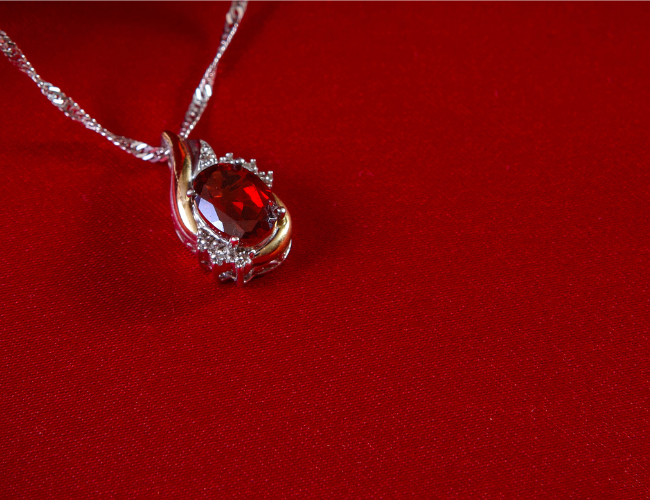
Ruby gemstones are a popular choice for jewelry due to their stunning beauty and durability. Here are some ideas for incorporating ruby gemstones into your jewelry collection:
- Ruby earrings: A pair of ruby stud earrings is a classic choice that can add a pop of color to any outfit.
- Ruby pendant: A ruby pendant necklace can be a statement piece that draws attention to the neckline.
- Ruby engagement ring: Rubies have long been associated with love and passion, making them an increasingly popular choice for engagement rings.
- Ruby bracelet: A delicate ruby tennis bracelet can be a subtle but elegant addition to your wrist.
When choosing ruby jewelry, it is important to consider the quality of the stone and the craftsmanship of the setting. A high-quality ruby set in a well-crafted setting can be a treasured heirloom for generations to come.
Conclusion
Ruby gemstones are truly one-of-a-kind, with their vibrant color and powerful symbolism. Whether you are looking to incorporate ruby into your jewelry collection or simply want to learn more about this fascinating gemstone, we hope this comprehensive guide has been informative and helpful.
With proper care and appreciation, your ruby gemstone can continue to shine for years to come.







